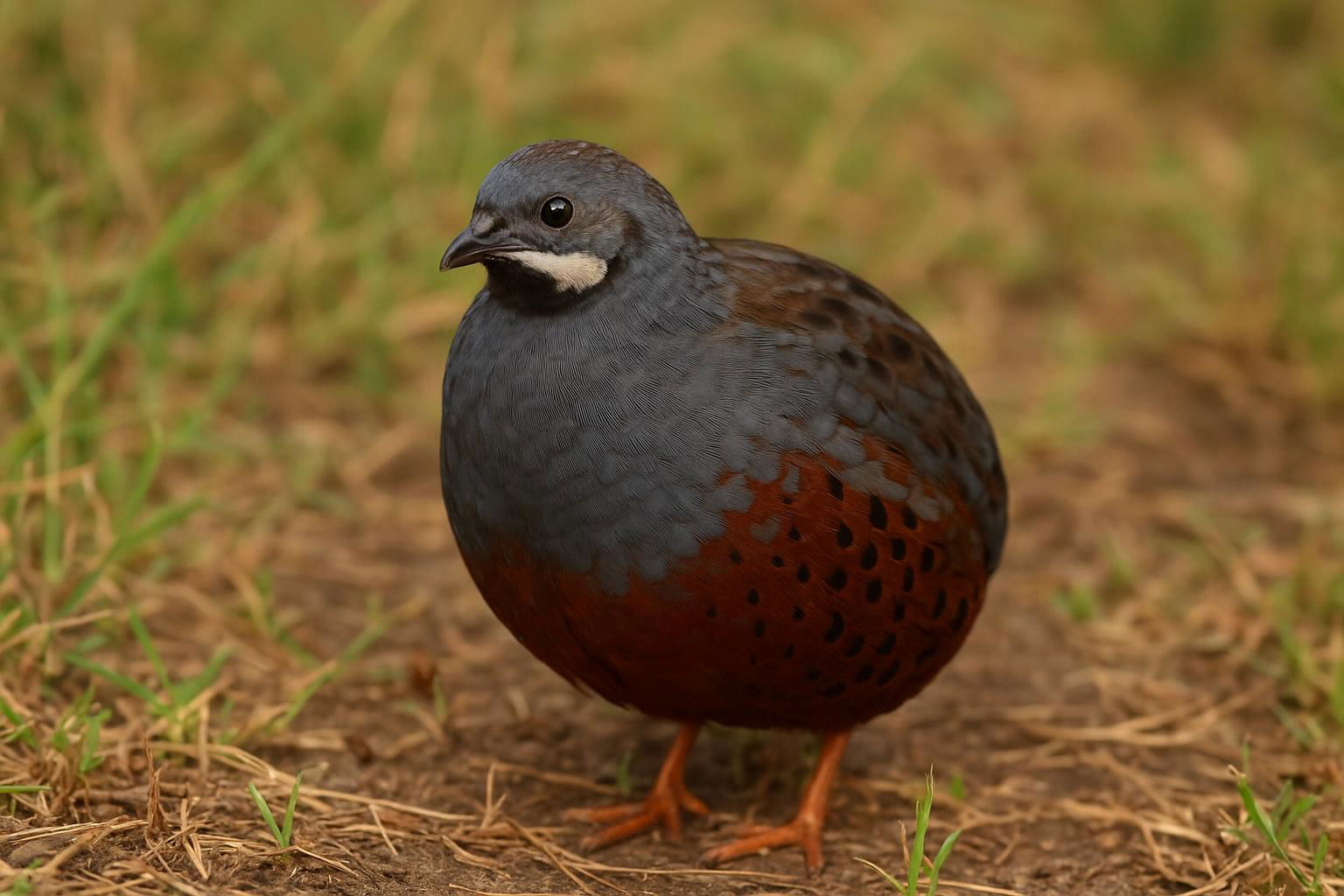
King Quail
Synoicus chinensis
The King Quail (Synoicus chinensis), also known as the Asian Blue Quail or Chinese Painted Quail, is a small, ground-dwelling bird native to parts of South and Southeast Asia, including India, China, and Indonesia. Renowned for its vibrant plumage, the male exhibits a striking metallic blue chest, reddish-brown belly, and rich black and white markings on the face, making it a favorite among aviculturists. Females are more subdued in coloration, featuring browns and tans that provide effective camouflage in their grassy or brush-filled habitats.
King Quails are the smallest of the quail species, with adults reaching lengths of 10–14 centimeters (4–5.5 inches) and a compact, rounded body. These birds are highly adaptable and often found in a variety of environments, including rice paddies, grasslands, and open forests. They are primarily granivorous, feeding on seeds, grains, and occasionally insects, which they forage on the ground.
Despite their tiny stature, King Quails are hardy and prolific breeders. They are monogamous, forming strong pair bonds during the breeding season. The female lays a clutch of up to 10 eggs, which she incubates for about 16-18 days. Known for their quiet yet bubbly demeanor, King Quails emit a variety of vocalizations, from soft coos to sharper calls used for communication and courtship. As a common feature in aviaries, these quails are valued for their beauty, ease of care, and ability to adapt to captive environments, contributing to their widespread popularity among bird enthusiasts worldwide.

 All Species & Breeds
All Species & Breeds
 Highland Cattle
Highland Cattle
 Miniature Donkeys
Miniature Donkeys
 All Species Directory
All Species Directory
 Highland Cattle in Virginia
Highland Cattle in Virginia
 Miniature Donkeys in Texas
Miniature Donkeys in Texas












